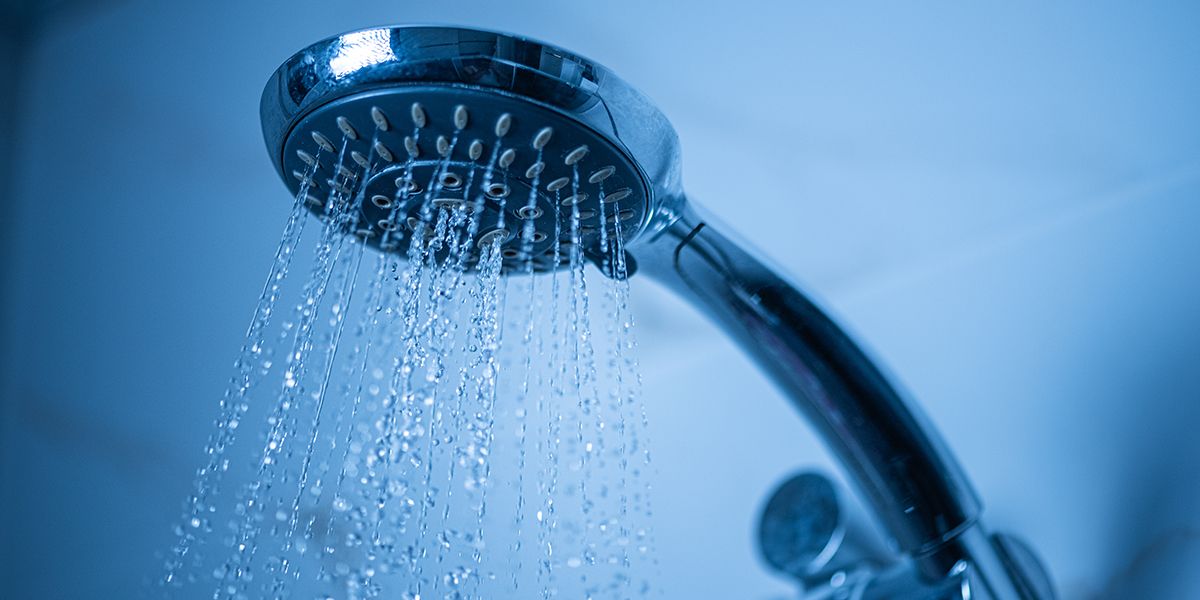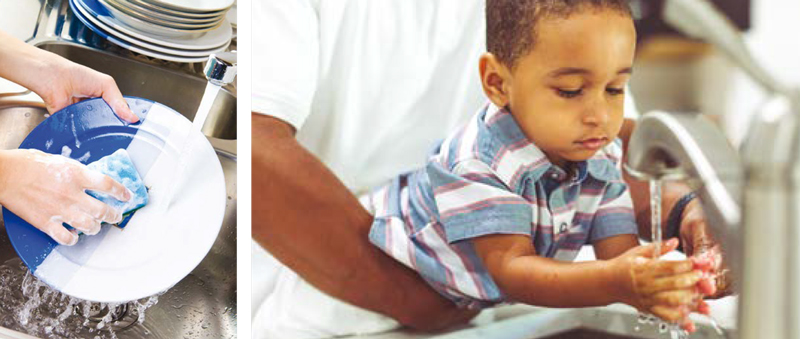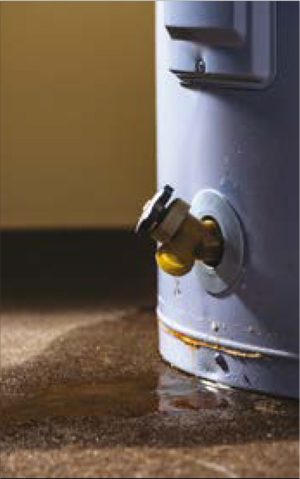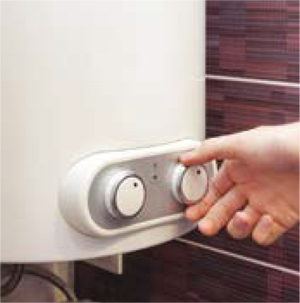The Silent Supplier | Water Heater Keeps Life Flowing

Often overlooked, a home’s water heater sees as much use in a day as the refrigerator. Just as the fridge keeps food cold and accessible, the water heater makes sure that warmed water is readily at hand, whether for laundry, dishes or a relaxing bubble bath. Even though it lacks the flash and central location of shiny kitchen appliances, the water heater commands roughly 18 percent of a home’s total energy use—second only to heating and cooling. And while a heater usually lasts 10 to 15 years, its operational costs are significant: $400 to $600 annually.

Many homeowners replace a heater only when pressed—when water that’s supposed to be inside the heater or coming out of a faucet instead floods the floor. Leaks can originate from any of the heater’s several valves: cold water, hot water, temperature/pressure, and drainage. Over time, any of these valves can corrode and weaken, generating a leak.
 A slight leak that’s obviously originating from a valve may be easily fixed. More significant leaks are often caused by build-up of sediment inside the tank. Over time, the weight and corrosive elements of the sediment will cause the heater’s base to crack and give way. That’s when it’s time to shop for a new heater.
A slight leak that’s obviously originating from a valve may be easily fixed. More significant leaks are often caused by build-up of sediment inside the tank. Over time, the weight and corrosive elements of the sediment will cause the heater’s base to crack and give way. That’s when it’s time to shop for a new heater.
To begin the search for a replacement, decide what kind of power will fuel the tank. The most common power sources are electric and natural gas, but solar- and geothermal-powered are also available. Solar power is best for sunny and warm climates, and may have high up-front costs that would take years to recoup if solar panels are not already installed. Heating water geothermally requires a geothermal heat system already in place.
Natural gas uses less energy, reducing the cost of running the heater, but converting from an electric heater to a gas heater entails significant plumbing changes, which increases initial out-of-pocket expenses. And natural gas heaters themselves are more expensive to purchase, so the savings from the energy cost are not realized for some time.
Once the power source is determined, the next choice is form: tank or tankless. The most common type is the tank heater, which comes in varying sizes to hold (and heat) a family’s water supply. The tank heater has changed little from the version patented by Norwegian-American Edwin Ruud at the end of the 19th century. There’s a tank to hold the water; a heating element and coils to heat the water; and temperature and pressure gauges. Hot water is always available, sitting inside the insulated tank.
 The electric tankless heater was invented by Stiebel Eltron in the 1920s but began attracting attention in the U.S. in the 1970s as a result of the energy crisis. Also known as an instantaneous or on-demand heater, the tankless option heats water as needed, so energy isn’t wasted on keeping sitting water hot. Tankless heaters will save on energy costs over time, but converting the plumbing from a tank heater to a tankless option will take more effort from a plumber, leading to high front-end installation costs. Also, tankless heaters don’t work well in homes with high demand for hot water. A busy family that expects to take simultaneous hot showers or run the dishwasher while also doing laundry will likely find lukewarm or cold water instead of hot.
The electric tankless heater was invented by Stiebel Eltron in the 1920s but began attracting attention in the U.S. in the 1970s as a result of the energy crisis. Also known as an instantaneous or on-demand heater, the tankless option heats water as needed, so energy isn’t wasted on keeping sitting water hot. Tankless heaters will save on energy costs over time, but converting the plumbing from a tank heater to a tankless option will take more effort from a plumber, leading to high front-end installation costs. Also, tankless heaters don’t work well in homes with high demand for hot water. A busy family that expects to take simultaneous hot showers or run the dishwasher while also doing laundry will likely find lukewarm or cold water instead of hot.
The largest tank heaters usually hold 80 gallons. While a typical family of four might use 85 to 100 gallons a day, you don’t need a heater that large, because the heater will warm additional water during the day. In general, a household with two to three people can manage with a heater of 40 to 50 gallons, while a family of five or more will want a heater of 60 gallons or larger.
When purchasing a heater, look for a long warranty. Consumer Reports has found that water heaters with longer warranties are often outfitted with larger heating elements and thicker insulation, so they really do last longer. Heaters may also offer digital temperature displays, which make it easy to adjust the temperature when away on vacation or to protect small children from burns.

As with any appliance, regular maintenance is a good idea. The heater’s manual will give specific guidance, but general upkeep includes flushing the tank every few months, which will reduce sediment build-up and extend the life of the heater. It’s also wise to check the internal anode rod—a metal rod inside the tank that attracts rustcausing ions naturally occurring in water. Over time, the rod will disintegrate. The tank flush is an easy DIY job; replacing the anode rod is somewhat trickier. A professional plumber can provide a full check-up and may identify correctable issues before permanent damage occurs.
As a key player in the workings of a home, paying attention to the water heater will keep the water—and your family’s comfort—flowing. ✦
bubble bath, cold water, dishes, drainage, electric, energy use, geothermal-powered, heating elements, hot water, laundry, natural gas, solar-powered, tank, tankless, temperature/pressure, valves, water heater






